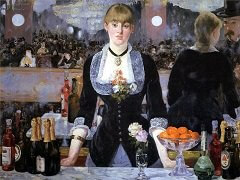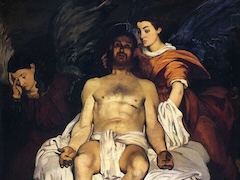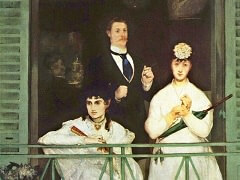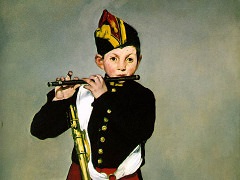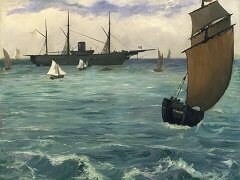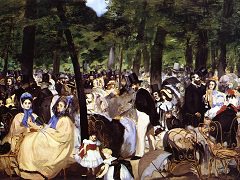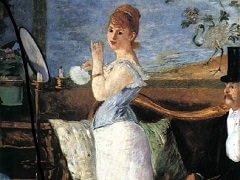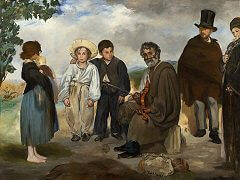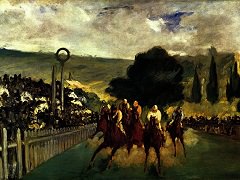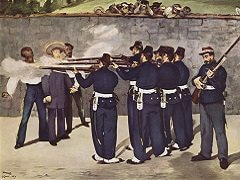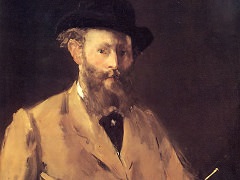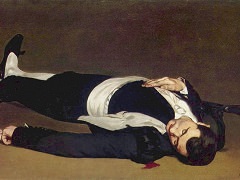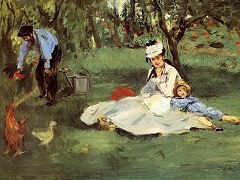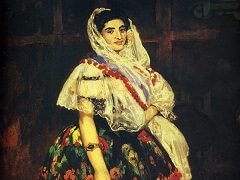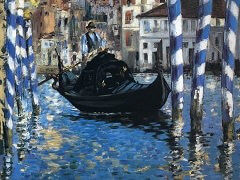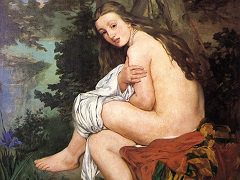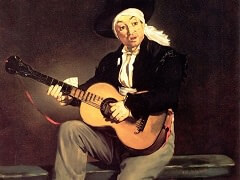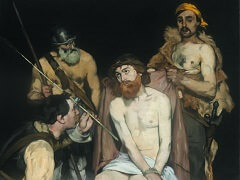Moonlight, Harbor at Boulogne, 1869 by Édouard Manet
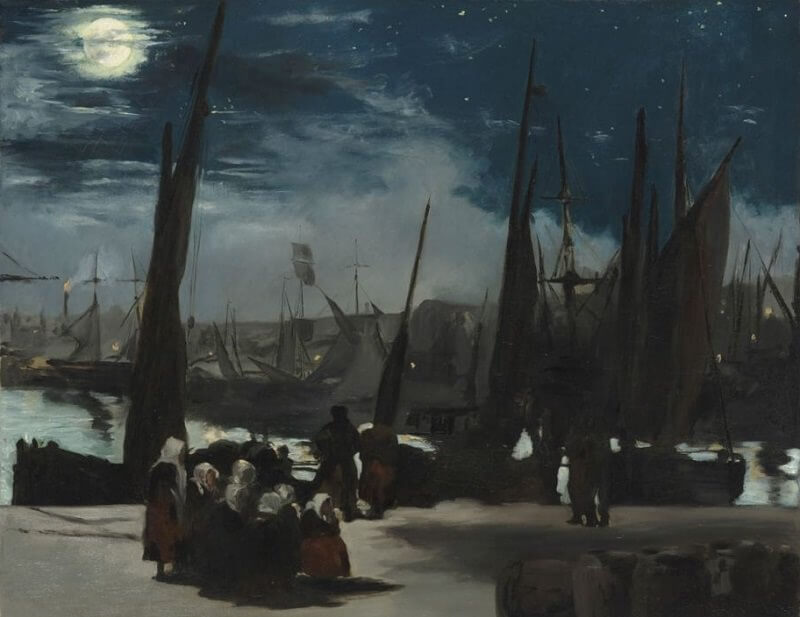
In this nocturnal scene, one of the few he ever painted, Manet seems to compete with Jongkind in an attempt to depict night almost entirely in monochrome. His black shades into brown and blue, passing from warmer tones into colder. Silhouetted against the quay, the hulls of the sleeping boats, and the water beyond, the women wait for their menfolk to come back from the sea. The sky is studded with stars. Nothing here is facile. No doubt one could find more luminous moonlight in later Impressionist studies, whose mauve and green tonalities recall the writings of Chateaubriand, but here the restricted palette, the frugality of means, and the disdain of obvious effects have created true atmosphere.
This is one of the canvases Manet painted at Boulogne. When he went down to the harbor to paint, he was often surrounded by a crowd of curious onlookers ready to jeer as they watched him work. "Look," they would say, "that's the artist they talk so much about, the one who paints such crazy things."
After depicting the activity of the harbor by day, Manet now showed its stillness by moonlight. He had promised Alfred Stevens to send a picture to the Brussels Salon, which was to open on July 29. He sent the painting off fresh from the easel to the Botanical Gardens, where the exhibition was to be held. It was well received and hung between La Baigneuse and La Dormeuse by Courbet.
Manet said to Antonin Proust at a dinner at Tortoni's in 1876, when this picture was mentioned.
I put down what I saw. Where would you find anything more sincere or free of convention. What could be easier than to put into this picture those charming touches so dear to Mr. Wolff. The things he likes are fought over now as though they were pieces of the true cross, but in ten years' time they will not be worth a penny!"
Tabarant relates that in 1872 Stevens sold this picture for 1000 francs to Durand-Ruel, who passed it on to Faure, the great collector of Manet's works. In 1899 it was acquired by the Comte de Camondo, from whom it went to the Louvre.

